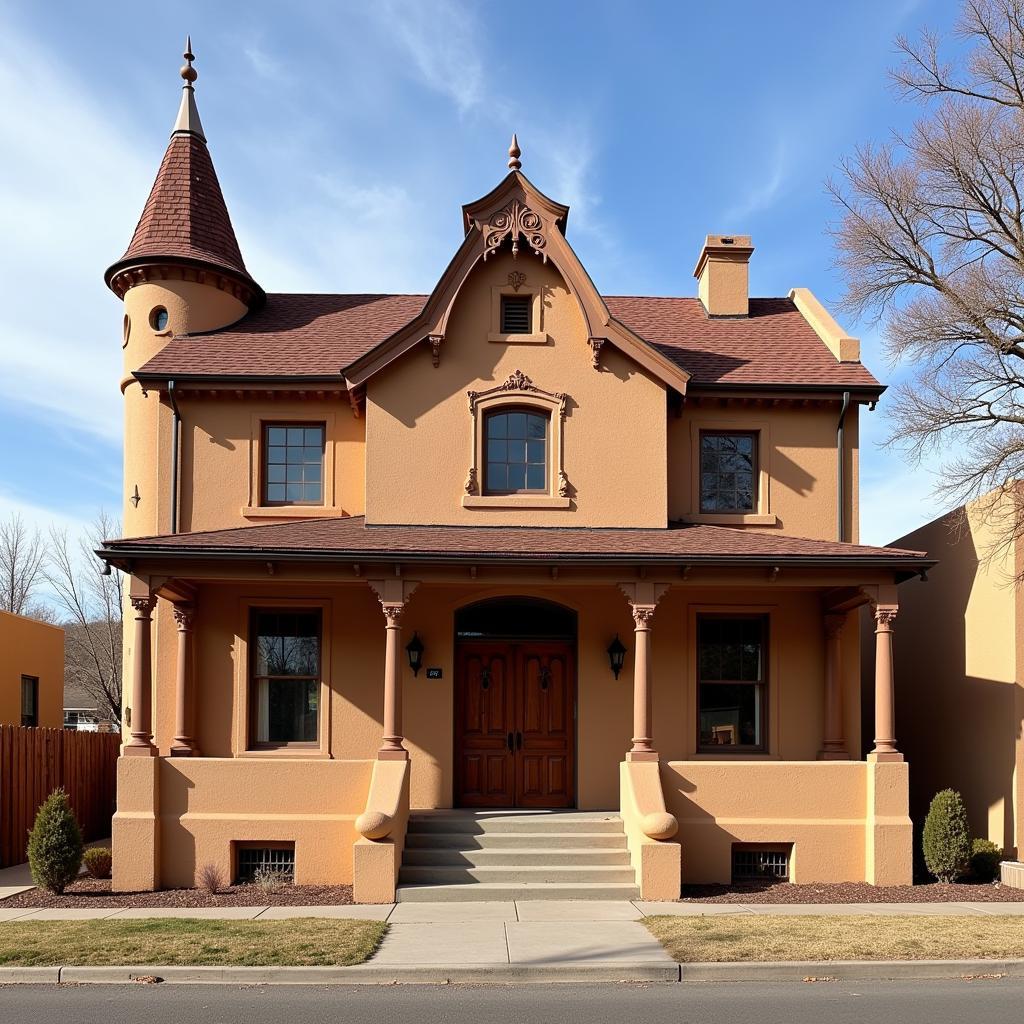Exploring the Unique Arquitectura of New Mexico
November 10, 2024New Mexico’s arquitectura is a captivating blend of Native American, Spanish Colonial, and Territorial styles, reflecting the rich cultural tapestry woven over centuries. This unique architectural heritage offers a fascinating journey through time, showcasing the ingenuity and artistry of the diverse communities that have shaped the state’s landscape. From ancient pueblos to grand haciendas, New Mexico’s buildings tell a compelling story of adaptation, innovation, and cultural exchange.
A Fusion of Influences in New Mexico Arquitectura
The architectural landscape of New Mexico is a testament to the harmonious coexistence and intermingling of different cultures. The earliest inhabitants, the Puebloan peoples, developed sophisticated building techniques using adobe, a sun-dried earth brick, creating multi-story dwellings that blended seamlessly with the surrounding environment. The arrival of the Spanish in the 16th century introduced European architectural elements, including Moorish influences, resulting in a distinct Spanish Colonial style characterized by thick walls, flat roofs, and decorative vigas (wooden beams). Later, the Territorial period brought American influences, adding Victorian and other architectural styles to the mix.
The Pueblo Revival style, emerging in the early 20th century, sought to emulate the traditional Puebloan architecture, emphasizing the use of adobe, rounded corners, and earth-toned colors. This style became synonymous with New Mexico arquitectura, further solidifying the state’s unique architectural identity.
Key Features of New Mexico’s Distinctive Architectural Styles
Each architectural style in New Mexico boasts distinct characteristics that contribute to the state’s diverse built environment. Spanish Colonial architecture is recognized by its thick adobe walls, designed for insulation against the harsh desert climate, and its intricate woodwork, often featuring carved corbels and decorative lintels. The Territorial style incorporates elements of Victorian architecture, such as ornate detailing and pitched roofs, often combined with adobe construction. Pueblo Revival architecture emphasizes simplicity and functionality, echoing the traditional Puebloan designs with its use of adobe, rounded forms, and a connection to the natural landscape.
What makes New Mexico’s arquitectura so unique is not just the individual styles, but the way they have blended and evolved over time, creating a dynamic and layered architectural narrative.
Why is New Mexico Arquitectura Important?
New Mexico arquitectura is more than just aesthetically pleasing; it holds profound cultural and historical significance. These buildings embody the spirit of resilience and adaptation, reflecting the ingenuity of the people who built them in response to the challenges of the desert environment. The preservation of these architectural treasures is vital for maintaining the state’s cultural heritage and sharing its unique story with future generations.
The unique arquitectura of New Mexico also plays a significant role in the state’s tourism industry, attracting visitors from around the world who are drawn to its distinctive charm and historical significance.
 Territorial Style Architecture in Albuquerque
Territorial Style Architecture in Albuquerque
Conclusion: A Legacy in Adobe and Beyond
New Mexico’s arquitectura stands as a testament to the state’s rich history and cultural diversity. From the ancient pueblos to the Spanish Colonial missions and Territorial homes, each structure tells a unique story, showcasing the innovative use of adobe and other traditional materials. Preserving and appreciating this architectural heritage is crucial for understanding the state’s past and shaping its future. Come experience the magic of New Mexico arquitectura for yourself.
FAQ
- What is the most common building material used in New Mexico arquitectura? Adobe
- What are vigas? Wooden beams used in ceilings in Spanish Colonial architecture.
- What is the Pueblo Revival style? An architectural style that emulates traditional Puebloan architecture.
- When did the Spanish Colonial period begin in New Mexico? The 16th century.
- What are some key features of Territorial architecture? Pitched roofs and ornate detailing combined with adobe construction.
- Where can I see examples of New Mexico arquitectura? Throughout the state, particularly in Santa Fe and Albuquerque.
- Why is preserving New Mexico arquitectura important? To maintain the state’s cultural heritage and share its unique story.
Common Scenarios:
- Planning a trip to New Mexico and want to see the architecture: Research specific locations known for particular styles, like Santa Fe for Spanish Colonial and Taos Pueblo for traditional Puebloan architecture.
- Interested in incorporating New Mexico architectural elements into your home: Consult with architects specializing in these styles to ensure authenticity and appropriate adaptation to your local climate.
- Researching the history of New Mexico: Explore books and online resources dedicated to the state’s architectural heritage and the cultural influences that shaped it.
Further Exploration
Explore other articles on our website related to New Mexico’s history, culture, and architectural styles.
Need help planning your New Mexico architecture adventure? Contact us: Phone: 0915117113, Email: [email protected], or visit us at: Tổ 3 Kp Bình An, Phú Thương, Việt Nam, Bình Phước 830000, Việt Nam. Our customer service team is available 24/7.